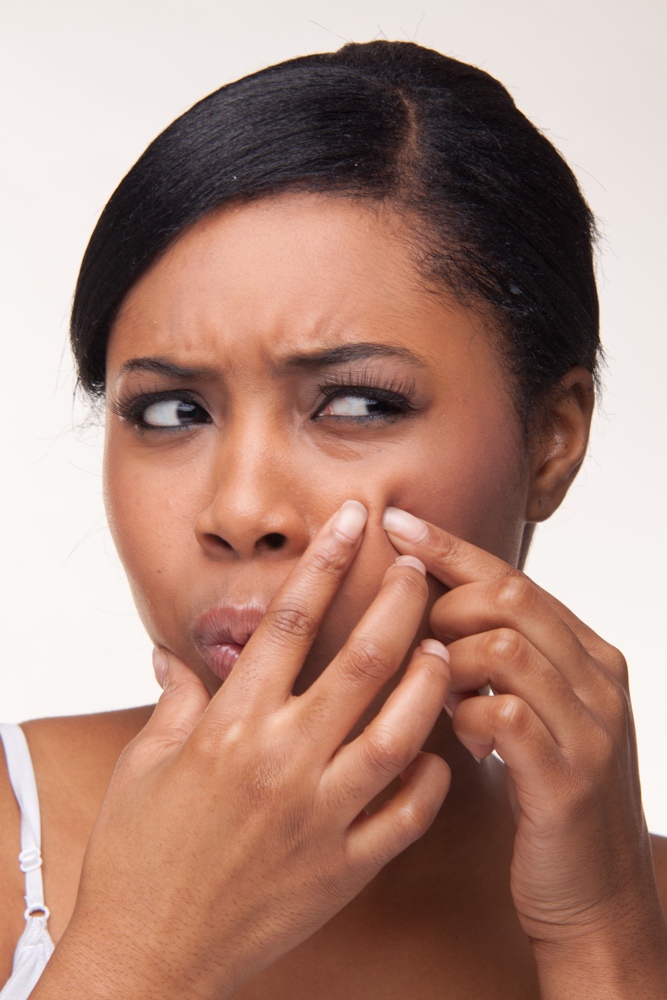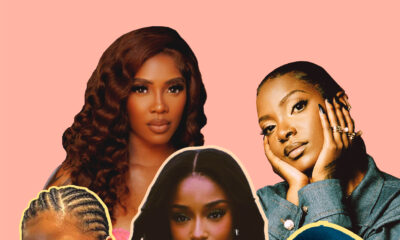Features
Lola Jay: An in depth Look at what ACNE Really is and How to Get Rid of it!
 In these days of makeup artists and beat faces, it is very important to take care of our skin underneath all that makeup, so that we don’t become so dependent on it, deceiving guys in the process *wink*
In these days of makeup artists and beat faces, it is very important to take care of our skin underneath all that makeup, so that we don’t become so dependent on it, deceiving guys in the process *wink*
But on the real though, acne can be a very serious and psychologically life threatening condition. Although I had written this article a while back, I was prompted to quickly dig through my files and publish it after reading the harrowing experience of a BN user with acne a couple days back.
Acne remains one of the most common skin condition affecting darker skin types, owing to our larger skin pores and our ability to produce excess oils or sebum from such pores.
Understanding what causes acne on a micro level is essential to choosing the right treatment products given the thousands of options that are available and make all kinds of claims.
Furthermore, might I add that it is VERY important to treat acne early in order to prevent complications such as acne scars and darkening of former acne spots, otherwise called Post-Inflammatory Hyperpigmentation (PIH), both of which can be extremely difficult to get rid of.
So let’s jump right into it.
What REALLY is acne?
Acne is a problem of the pores on our skin. Inside each pore is a hair follicle, which has a ‘sebaceous’ or oil gland attached to it. On the faces of most females, these hair follicles are empty, hence why our faces aren’t covered in hair.
In a normal pore, the sebaceous gland produces oil which travels up the hair follicle to lubricate the hair shaft (if present) and is extruded through the opening of the follicle onto the outer skin, giving the face a healthy glow.
In acne however, things go a bit beserk.
- First of all, the skin cells within the upper part of the hair follicle multiply excessively, causing the opening of the hair follicle to become narrowed. The medical term for this unit is called an ‘open comedone’
- Secondly, the sebaceous gland secretes excessive amounts of oil, which causes those skin cells (at the top of the follicle) to become more sticky, blocking the opening even further, creating a ‘closed comedone’.
- This creates a nice, warm slimy environment, which attracts bacteria, which come in their numbers to reside there. As they are invading a space they should not normally be in, the body’s ‘immune system’ or police is alerted and goes in to fight the bacteria, causing a lot of chaos as you can imagine. The resulting lesion you see on the face will therefore range from a papule to a pustule to a nodule or cyst, depending on the extent of the severity of the chaos or ‘inflammation’
From this understanding of what goes on in acne, it is important to use treatments that target the specific part of the cycle, depending on severity.
Classification and Treatment of Acne
Mild acne
- Whiteheads/Blackheads: The blockage of the pores from these dead skin cells and excessive oils forms what is called a whitehead or closed comedone. Before the pores close up, the dead skin cells are exposed to the air which causes ‘oxidisation’, giving it a black colour, hence why it is called a blackhead or open comedone.
- Treatment: This best treatment for this stage of acne is Retinoid creams. Retinoids reduce the multiplication and stickiness of the dead skin cells and help to push out all the junk from the follicle. By doing this, they prevent the formation of new comedones. Some retinoids such as Adapalene and Tretinoin have been shown to be helpful in treating both active acne and dark spots or PIH that develops following the acute inflammation.
If this does not help, preparations containing Salicylic or Azaleic acid may be used instead. They work in a similar fashion by reducing the multiplication of the dead skin cells, and may also assist the body’s immune response. Azelaic acid in particular has been shown to improve both acne spots and dark spots/PIH in darker skin tones.
Moderate acne
- Papules and Pustules: When the bacteria start to multiply inside the blocked pores, a painful dark pimple or papule may result. Sometimes, this may extrude yellow gooey material at which stage it is called a ‘pustule’.
- Treatment: For this type of acne, in addition to the treatment for mild acne, a drug that can kill the bacteria is used. This may come in the form of a facewash, cream, or tablets depending on severity.
Facewashes containing Benzoyl Peroxide (BPO) and the Tetracycline group of antibiotics are such examples and are sometimes combined into one product e.g Clindamycin/BPO gel.
However, in terms of getting rid of the dark spots, a regimen consisting of clindamycin/BPO topical gel in combination with 0.04% tretinoin gel has proven to be effective.
Severe acne
- Nodular or Acne Conglobata: Forget the fancy name but this is the severest form of acne marked by fairly large painful bumps. The main problem with this type of acne is that it can leave the dreaded acne scars, which are extremely difficult to get rid of.
- Treatment: A special drug called Isotretinoin is helpful in treating this form of acne and has been described as a ‘wonderdrug’ of sorts as it targets all 4 stages of the acne cycle, preventing scarring if started at the right time. However, being such a potent drug, it MUST be prescribed by a licenced dermatologist as it has several side effects and has been linked to depression and suicide.
Other acne treatments:
- Hydroquinone– in as much as I hate to talk about bleaching agents and do not endorse them, it is often used in the treatment of post inflammatory hyperpigmentation or dark spots left by acne lesions. Treating the affected spots ONLY is helpful if only a small area is affected. However, it MUST be used under the supervision of a licenced dermatologist, as side effects such as skin cancer, skin infections and permanent darkening of affected areas can occur.
- In patients with moderate to severe acne that tend to occur around periods, the oral contraceptive pill or a drug called Spironolactone can also be used.
- Several other cosmetic procedures, such as chemical peels, lasers and light therapy are available which are beyond the scope of this article.
Lastly, it is essential to wear sunscreen yes SUNSCREEN, despite our skin tone. Not only does it help to prevent aging and ‘skin cancer’ (which Bob Marley died of), but it also prevents further darkening of the acne spots.
References:
- Yin NC, McMichael AJ. Acne in patients with skin of color: practical management. Am J Clin Dermatol. 2014;15(1):7-16.
- Bolognia JL, Jorizzo JL, Schaffer JV. Dermatology. 3rd ed. Callen JP, Cerroni L, Heymann WR, Hruza GJ, Mancini AJ, Patterson JW, et al., editors. China: Elsevier; 2012. 1186 p.
























